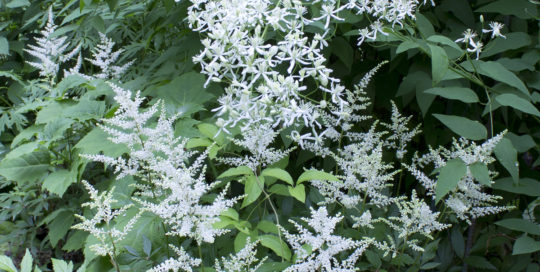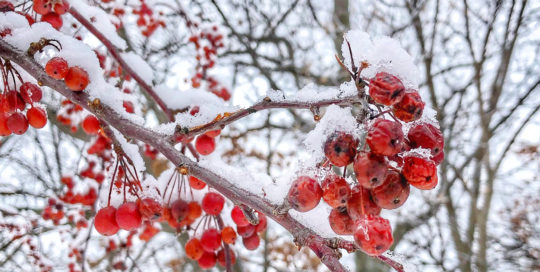Remove Dead Plant Material
Weeding is another task that (unfortunately!) becomes no less important just because the mercury starts to dip. Going through perennial beds to remove weeds before winter sets in is important. It will prevent insects and diseases from hiding out and overwintering in the garden. Remove any dead material or plant debris that has collected in flowerbeds as well. Additionally, beginning with a tidy, weed-free landscape always feels like a welcome head start on the growing season. In March and April, it’s time to grab the Wellies and start mucking about in the outdoors again. Future-you won’t have to worry! It’s the equivalent of finishing all your homework the night before. It always feels good to be prepared!
The Advantage of Pruning Aggressively
Cutting your plants down to the ground before winter is another beneficial practice. Since they will grow back in spring from their root system, most perennial stalks and stems can be safely trimmed to just above the soil level as plants enter their period of winter dormancy. This is one more task that when completed will make for lighter work as the weather warms next spring. Feel free to allow for some exceptions though. Leaving a few perennials standing can add winter interest to the landscape and seed heads will provide food for birds. Just remember to cut these plants back before the new growth starts to come up next year.
Don’t Forget the Mulch
Add mulch – pine needles, wood chips, chopped leaves or other organic matter – to your perennial beds once temperatures become steadily cooler and the ground is starting to freeze. Mulching will provide a protective layer of insulation to the soil throughout the winter months and prevent damage to roots from the freezing and thawing cycles of late winter and early spring. Spread the mulch two to three inches on the ground around plants, but take care to avoid covering them up completely or piling it on too thickly, which can result in a wet environment, fungus problems, and rotting plants.
Cover Vulnerable Plants
Some of my favorite shrubs just aren’t quite hardy enough to withstand our Midwestern winters without a little help. This knowledge comes from harsh lessons learned with certain varieties of roses and hydrangeas. These plants can be wrapped or covered for winter protection. Once temperatures are consistently cold, wrap the plants in burlap or landscape fabric. Another easy trick is to install a chicken wire “cage” around them, then fill it in with leaves raked up from your yard. Just make sure to remove any coverings in the event of unseasonably warm days, as you don’t want plants to become overheated.
Now It’s Time to Relax with a Cuppa
And now you can relax! Spend the next few months curled up with your seed catalogs, placing orders and making plans. By taking the time in autumn to prepare your garden for the bitter winds and cold months ahead you’ll be all set when the warmer days of early spring finally do roll around and it’s time to dig out our gloves and get out there again.









